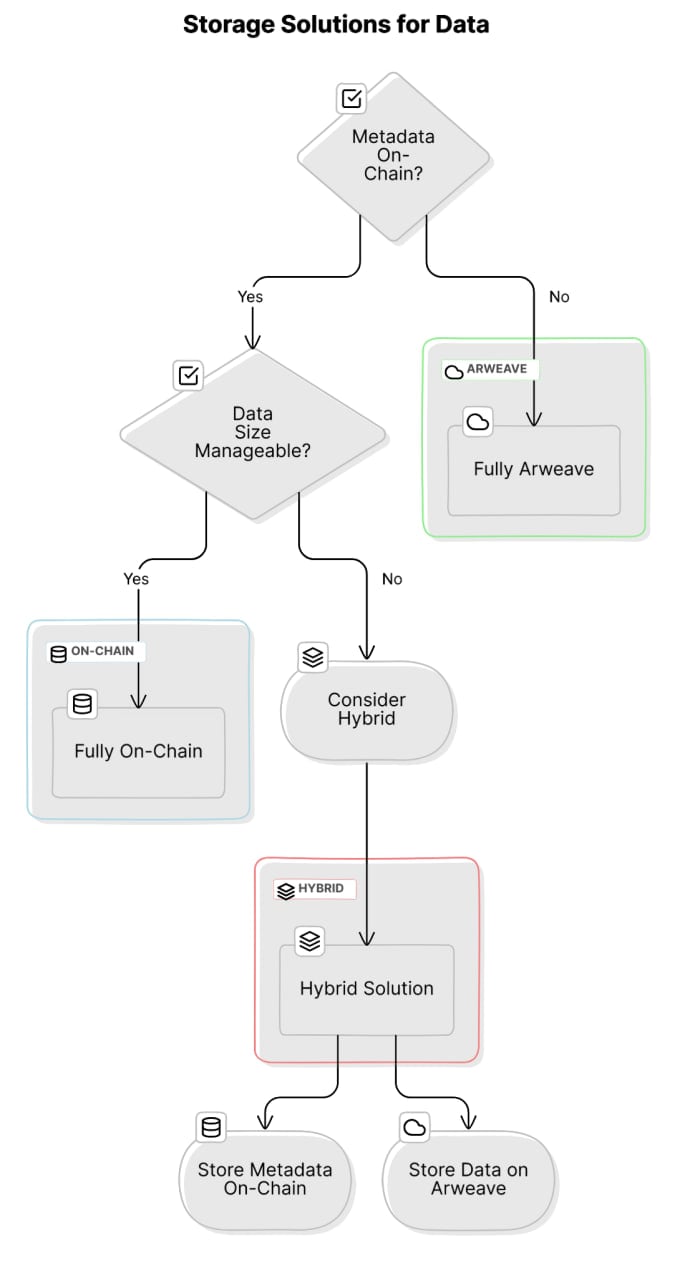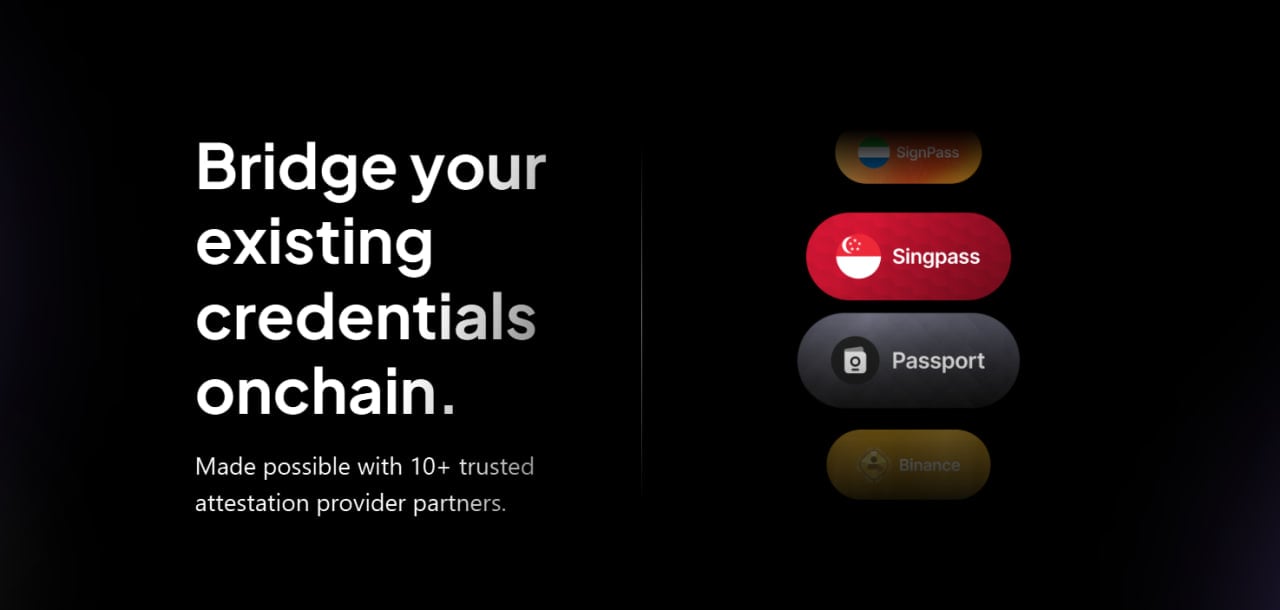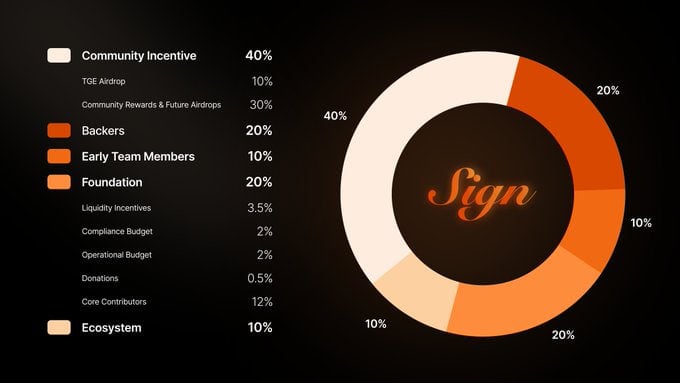Sign Protocol is an omni-chain attestation protocol that verifies and standardizes information across different blockchains. It improves efficiency and reduces reliance on central authorities. This article will explain what the Sign Protocol is, its main features, and its significance in blockchain verification.
What is Sign Protocol?
The Sign Protocol has been developed as a comprehensive omni-chain attestation protocol with the main goal of validating and confirming information across blockchain networks. By creating a common standard for attestations, it makes the process of checking information easier on different blockchain platforms, reducing problems and lowering the risks usually associated with central authorities.
Learn more: Binance Will List Sign (SIGN) on HODLer Airdrops!
This cutting-edge strategy employs decentralized technologies to guarantee secure and dependable attestation data processes that are crucial in fostering confidence during online interactions.
The main goal of Sign Protocol is to improve verification processes in blockchain systems by allowing different chains to work together easily. Thanks to its decentralized design, this protocol facilitates robust and seamless attestations throughout an array of blockchain platforms. It delivers omni-chain functionality, which enables assured verifications irrespective of whether one uses Ethereum, Solana or TON—contributing toward a more cohesive and trustworthy digital landscape.

Source: Sign Protocol
Integral, too, is the Schema Registry System embedded within the Sign Protocol. It establishes standardized formats pivotal for both verifying information efficiently and preserving schemas systematically.
This system significantly contributes towards making sure that all attestations are uniform and easily interpretable by any party involved—an attribute critical in boosting the integrity & dependability associated with these protocols’ use cases. In directly confronting conventional trust-based challenges inherent in central authorities’ systems, Sign Protocol sets forth advancements conducive towards reinforcing digital authentication’s security moving forward into future tech landscapes.
Key Features of Sign Protocol
The Sign Protocol is distinguished by its commitment to providing robust security, high efficiency, and versatile adaptability. These core principles are integrated into its primary functions, which encompass Omni-Chain Attestation, Secure Token Distribution, and Digital Signatures & Consent Verification. Each function plays an indispensable role in improving the processes of verification within the realm of blockchain ecosystems.
Through developing a universal attestation standard applicable across various blockchains, the protocol revolutionizes the process. It facilitates verifiable attestations along with secure token distribution to streamline token management while guaranteeing transaction integrity and authenticity.
Sign Protocol’s use of digital signatures coupled with zero-knowledge proofs for verifying consent underscores its dedication to upholding superior standards of security and regulatory compliance.
Omni-Chain Attestation
Sign Protocol introduces an omni-chain attestation solution that facilitates effortless verification across various blockchain networks, encompassing prominent platforms such as Ethereum, Solana, and TON. A common standard for digital trust by enabling verification across different blockchains and ensuring the accuracy of attestation data no matter which blockchain it comes from.


Omni-Chain Attestation
By championing the ability to provide attestations on multiple blockchains with ease and verifying them without restrictions through its omni-chain attestation support, Sign Protocol addresses one of the major hurdles within the realm of blockchain technology.
The enhancement brought about by this feature bolsters not only transactional reliability but also incentivizes broader incorporation of blockchain technologies due to improved usability and consumer appeal.
The project’s creation sets forth a universal criterion for attestations, which bolsters cross-chain validation processes while cultivating verifiable confidence amongst participants in various sectors. It makes sure that information about attestations stays secure, easy to access, and simple to verify across different blockchain systems, helping to build strong and flexible virtual structures.
Secure Token Distribution
The Sign Protocol plays a crucial role in the secure allocation of tokens, bolstering both the effectiveness and security of token management activities conducted on-chain. By safeguarding token transactions with transparency and integrity, Sign Protocol preserves the essential trustworthiness required for blockchain environments to thrive.
Within Sign Protocol lies TokenTable, an integral feature brimming with various instruments tailored to refine the process associated with distributing tokens. Components such as Airdrop Pro and Unlocker are instrumental in ensuring reliable credential verification while maintaining precise trackability, thus guaranteeing that token dissemination is both compliant and provable.
Implementing the Sign Protocol into one’s approach to handling tokens boosts regulatory adherence and significantly elevates proficiency regarding tracking mechanisms within blockchain initiatives.
Digital Signatures and Consent Verification
The Sign Protocol utilizes digital signatures to authenticate consent and secure the integrity of transactions. It incorporates zero-knowledge proofs, a feature that allows the verification of consent while preserving the privacy of sensitive data contained within attestations.
In this protocol, using digital signatures along with zero-knowledge proofs creates a solid way to check credentials without revealing private information, which is crucial for things like signing documents and executing contracts.
Sign Protocol capitalizes on cutting-edge technologies to offer a solution that ensures safe, compliant confirmation of agreement in blockchain-based activities. The importance of this capability lies in its role in cultivating trustworthiness and affirming the lawful legitimacy of electronic interactions, marking it as an indispensable resource for sectors demanding stringent compliance and security protocols.
How Sign Protocol Works
The Sign Protocol is designed to uphold the security and accuracy of attestations by employing both on-chain verification methods and decentralized storage systems. This method not only bolsters trust between users and other involved parties but also offers an expandable framework for validating claims. By incorporating standardized formats from its Schema Registry, the Sign Protocol simplifies and expedites the attestation process, thus improving consistency and dependability.
This protocol plays a pivotal role in ensuring adherence to compliance standards such as AML (Anti-Money Laundering) and KYC (Know Your Customer) regulations. It achieves this by linking wallet addresses with their corresponding KYC validation statuses, which ensures that only those who are compliant can engage in activities within blockchain networks—thereby reinforcing ecosystem safety and integrity.
Lastly, Sign Protocol sets out to continuously harness cutting-edge technologies so as to boost its efficiency and utility during what’s heralded as a new era for technology adoption. Its commitment lies in staying at the forefront of advancing security measures through consistent enhancement of its features.
Writing & Reading Data
The effective operation of the Sign Protocol relies heavily on the accessibility of data. This protocol is composed of an array of elements and subsystems that synchronize to enhance the experience for both novice and advanced users.
Within the Sign Protocol, there are two main types of data: Schema and Attestation, which can be generated through three principal approaches: entirely on-chain, completely via Arweave, or a combination thereof.
Transactions conducted fully on-chain as well as those employing a hybrid approach may commence autonomously. Transactions exclusively utilizing Arweave necessitate initiation via the Sign Protocol API. Once these transactions achieve completion and become recorded onto any compatible blockchain network, they are captured by the indexer known as SignScan.
To access this information, users have several options at their disposal, including querying smart contracts directly from within the chain itself. Moreover, users can also access this information by tapping into Arweave’s storage platform. Or leveraging functionality provided by the tailored API designed for use with SignScan—all ensuring multiple avenues for flexibility in accessing crucial protocol data.
On-Chain and Off-Chain Modes
The Sign Protocol provides a dual-mode option for users to store attestations, allowing them to select either on-chain or off-chain storage based on their requirements. Opting for the on-chain mode delivers superior security and clarity, which is particularly beneficial in scenarios that necessitate strong verification procedures. On top of this, managing data becomes more efficient with on-chain storage.
For those prioritizing cost-efficiency, the protocol’s off-chain mode preserves the authenticity of the attested information linked to its on-chain counterparts without sacrificing security standards. This versatile approach offered by Sign Protocol serves various needs effectively, thus contributing positively toward increasing blockchain integration across different applications.
Hybrid Storage Solutions
The SIGN Protocol presents a blend of secure and cost-effective storage alternatives by integrating both decentralized and centralized exchange storage opportunities. Users are empowered to choose the most suitable storage plan tailored to their individual needs, enabling them to enhance efficiency while maintaining robust security measures.
Employing a hybrid strategy enables diverse organizations to harness the advantages inherent in both decentralized and centralized repositories. Such flexibility offered by Sign Protocol is pivotal for preserving access to data across various applications and sectors, ensuring that all archived attestations retain their integrity and remain readily retrievable.
Applications of Sign Protocol
Over 200 projects have placed their trust in Sign Protocol, reflecting its adaptability and dependability for a wide range of uses. The protocol plays an integral role in facilitating processes like contract signing, verifying credentials, and providing uniform frameworks for attestation. Such use cases underscore the protocol’s proficiency in tackling actual business challenges while boosting procedural effectiveness.
The efficacy of Sign Protocol is evident across multiple sectors, including financial technology and legal services, due to its successful deployments. It serves various purposes, from ensuring secure document execution to managing token distribution efficiently. With Sign Protocol’s solid infrastructure, all operations are conducted with utmost security, allowing for verifiable transactions that adhere strictly to legal norms.
Sign Protocol’s Role in Enhancing Compliance
Many sectors prioritize compliance, and the Sign Protocol is vital in this context. It upholds legal standards by implementing legally binding digital signatures, thereby supporting clear and responsible data exchange within pertinent laws. This function is particularly critical for fintech newcomers and various industries aiming to foster confidence among their users.
Beyond merely providing digital signatures, the Sign Protocol incorporates additional mechanisms like credential verification and consent verification to bolster its adherence to regulations. These features ensure that every transaction can be verified and is legally valid, making the Sign Protocol a crucial tool for organizations aiming to meet regulatory standards.
AML and KYC Compliance
The Sign Protocol plays an essential role in preserving the integrity of financial systems by ensuring adherence to Anti-Money Laundering (AML) and Know Your Customer (KYC) regulations. It accomplishes this by facilitating effective identity checks and overseeing transactions on several blockchains, a key factor for bolstering confidence in digital dealings while guaranteeing that they comply with legal standards.
Through its EthSign component, SIGN provides digital signatures that have obtained legal acceptance as binding within territories such as the United States, China, and Australia.
Automated Reporting
Sign Protocol incorporates an automated reporting function to simplify compliance for organizations. By automating these tasks, the protocol diminishes the burden on compliance personnel, guaranteeing prompt filing and reducing mistakes. This feature is especially advantageous for entities that must comply with stringent regulations in a timely manner.
The network uses AI-driven applications to improve the reporting process, enabling users to take advantage of advanced technologies like AI agents, which results in more accurate and faster report creation. This strategy boosts productivity and ensures adherence to all regulatory standards, positioning Sign Protocol as a robust solution equipped for future compliance needs. Organizations can also leverage AI-driven applications through integration with their systems to optimize overall business operations.
Sign Protocol Tokenomics
Sign Protocol’s tokenomics are structured to bolster its ecosystem and community via the native digital currency, $SIGN. It plays multiple crucial functions, such as serving universally for utility purposes and operating as a worldwide community-driven currency.
Members of the Sign Protocol collective are motivated to accumulate, pledge their tokens (stake), spend, and innovate additional uses for $SIGN, thereby aligning their personal interests with the expansion and prosperity of the protocol.
By possessing $SIGN tokens, individuals gain access to participating in governance activities related to Sign Protocol while also taking advantage of various incentives on offer. This framework encourages not only active participation amongst community members, but it is also crafted with an eye toward fostering enduring sustainability and encouraging ongoing development within the Sign Protocol.


Token Allocation
The total supply of $SIGN is capped at 10,000,000,000 tokens, with an initial circulating supply of 12%. The allocation is designed to balance the needs of the community, backers, team members, and the ecosystem.
Specifically, 40% of the tokens are allocated for community incentives, including a 10% TGE Airdrop and 30% for community rewards and future airdrops.
Other allocations include 20% for backers, 10% for early team members, 10% for the ecosystem, and 20% for the foundation. This distribution ensures that all stakeholders are adequately incentivized and that the protocol has the necessary resources to continue its development and expansion.


Source: X
Token Vesting Schedule
The token vesting timetable is crafted to guarantee an equitable and enduring disbursement of tokens.
As an illustration:
- Tokens from the TGE Airdrop are entirely accessible at the time of the Token Generation Event, granting immediate liquidity to initial supporters.
- Investors encounter a one-year cliff followed by a gradual monthly release across two subsequent years.
- In contrast, early team contributors face a similar arrangement yet stretched over three years.
Token allotments for both the foundation and the ecosystem possess prolonged vesting intervals with quarterly releases throughout five years. Meanwhile, incentives aimed at community members as well as forthcoming airdrops begin their phased distribution three months post-TGE and continue for five years in total. Such meticulous organization aims to bolster protocol expansion while simultaneously averting market inundation through strategic token distribution scheduling.


Token Vesting Schedule – Source: X
SIGN Airdrop
The much-anticipated SIGN Airdrop marks a notable milestone for the Sign Protocol community. The first batch of airdrop tokens will be instantly accessible with the TGE on a specially designed page for this purpose. This immediate reward system appreciates and motivates early adopters, thus cultivating robust engagement within the community from day one.
Looking ahead, Sign Protocol might deploy cutting-edge methods to unlock additional future token allocations. For instance, utilizing price-based unlocking mechanisms powered by TokenTable can spur greater enthusiasm among members while promoting more sustainable economic practices within the token’s ecosystem.
To determine who qualifies for the airdrop, an asset snapshot on-chain is scheduled for April 25th, 2025. By adopting such transparent and calculated measures, it ensures that these actions are in harmony with Sign Protocol’s overarching ambitions.
You can check your airdrop here.
Summary
The Sign Protocol marks a noteworthy progression in blockchain validation and attestation, setting up a global benchmark for attestations while facilitating verification across multiple chains. It addresses important challenges related to digital trust and compatibility by introducing key features like secure token distribution and better consent confirmation, showing its commitment to protecting security, improving efficiency, and following regulations.
Looking ahead at what’s on the horizon, the economic model of $SIGN coupled with the anticipated SIGN Airdrop presents intriguing prospects for fostering community participation and expansion. The project transcends mere technological breakthroughs—it heralds an era of heightened safety, transparency, and synergy within the digital landscape.
Frequently Asked Questions (FAQ)
What is Sign Protocol?
Sign Protocol is a comprehensive omni-chain attestation protocol that enables verification and attestation of information across various blockchain platforms, establishing a universal standard for digital trust.
How Does Sign Protocol Ensure Secure Token Distribution?
The Sign Protocol facilitates the secure distribution of tokens through the use of mechanisms such as TokenTable, Airdrop Pro, and Unlocker. These tools support transparency and adherence to regulations during the management process.
Such an infrastructure improves both effectiveness and security in the dispensation of tokens.
What are the Key Features of Sign Protocol?
Sign Protocol incorporates several core components, including Omni-Chain Attestation, Secure Token Distribution, and Digital Signatures & Consent Verification. These elements work together to bolster security and streamline processes within blockchain transactions.
By integrating these features, Sign Protocol establishes a strong foundation for safe and efficient digital engagements.
How Does Sign Protocol Enhance Compliance with AML and KYC Regulations?
Protocol for Signing facilitates adherence to Anti-Money Laundering (AML) and Know Your Customer (KYC) standards by providing digital signatures that are recognized as legally binding. It streamlines the process of verifying identities and aids in monitoring transactions across multiple blockchains, which is crucial for meeting regulatory requirements.
What is the Significance of the SIGN Airdrop?
The SIGN Airdrop is of notable importance since it rewards early supporters. It also integrates strategies for future token releases, which are in harmony with the long-term goals of the protocol.
Adopting this strategy not only encourages community involvement but also strengthens the project’s enduring viability.







